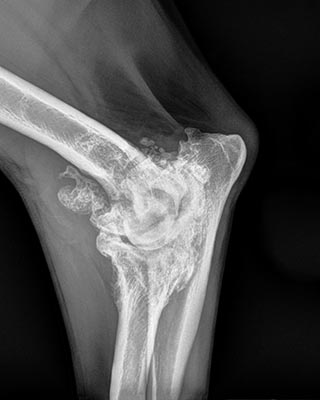Arthritis is a tricky condition in the veterinary world. Our pets are living longer lives and as a result we’re seeing diseases that occur in older patients much more commonly. Arthritis tends to be a lot sneakier than a lot of other diseases more common in older pets, though, and may take time to become obvious.
Simply put, arthritis is inflammation of the joints. In older patients this is usually caused by the cartilage that protects joints wearing out; this causes bone to grind on bone and the joint reacts by becoming inflamed and sore. The body tries to respond by laying down new bone in the area but this can actually make things much worse.
We can’t stop arthritis or reverse the damage to the joints, but we can slow its course down and relieve the discomfort caused by it. Earlier intervention can delay the worst of arthritis by a significant amount of time, so it’s important to keep an eye out for the signs of arthritis in our older pets. They can be pretty subtle!
- Reluctance to jump or climb
- Using multiple short jumps for a distance – such as using a chair to get up on a table
- Stiffness when getting up in the morning
- Slowness or awkwardness when lying down
- Sitting down with legs held in awkward positions
- Slowness when on walks, or reluctance to go the same distance
- Grumpiness or other behavioural changes
- Spending more time sleeping or being inactive (hard to spot in cats!)
- In cats, scruffy or poorly groomed coat
- In cats, avoiding jumping into the litter tray
As you may have guessed from that list, it’s even trickier to spot arthritis in cats than it is in dogs.
Arthritis is an insidious disease – it’s often easy to miss or to forget how painful it is as our pets often adjust to the gradual changes. Some pets don’t show signs we think of as pain such as yelping/crying or limping. But arthritis is painful, and needs to be managed carefully to give our pets their best lives in their later years.
There is no one treatment for arthritis that works perfectly for every pet. Most arthritis patients require multiple different forms of therapy to keep them comfortable. This might include joint supplements in the diet, laser therapy, swimming, pain medication, and joint injections. It’s best to discuss with a vet what sort of options are available for your pet.




